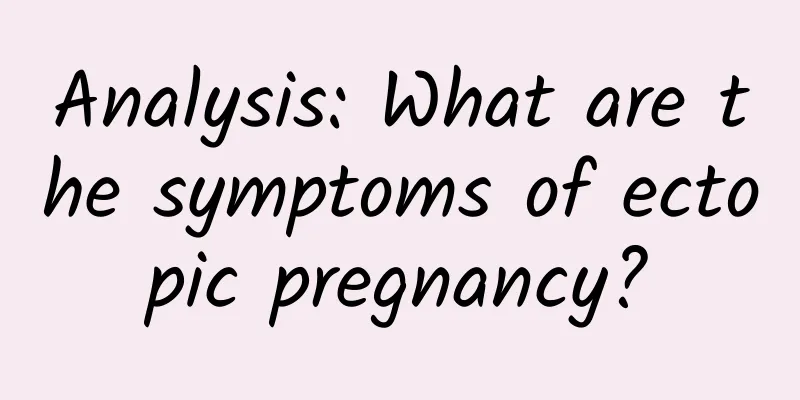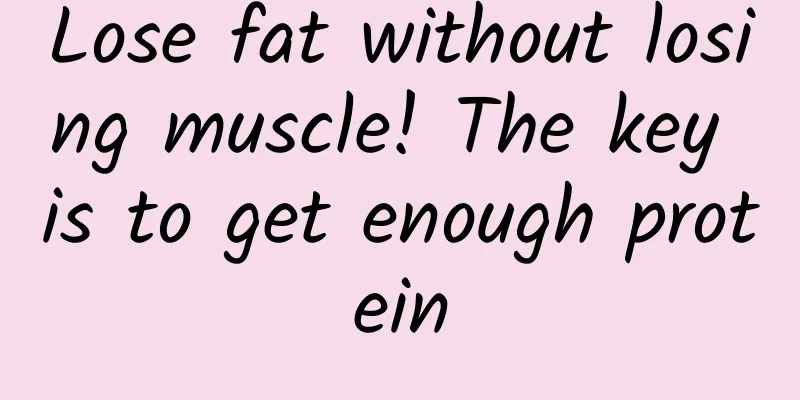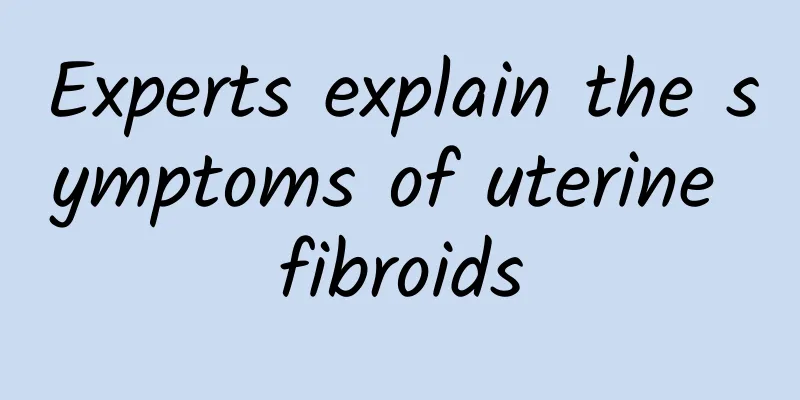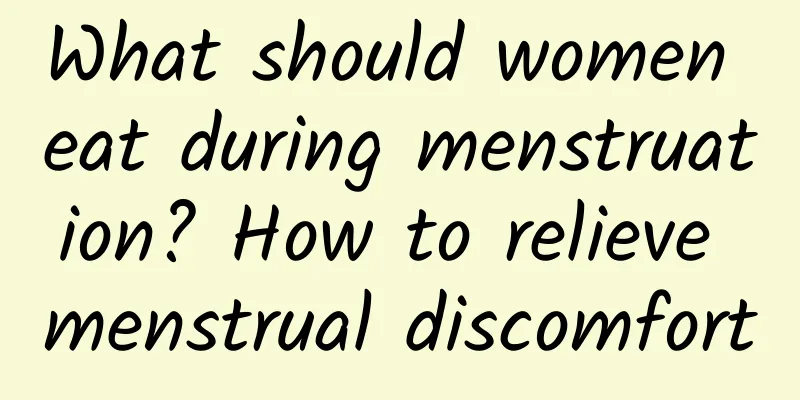Metabolic weight loss is very effective... Wu Mingzhu: Are you taking the three major Chinese medicines of Cassia seed correctly?
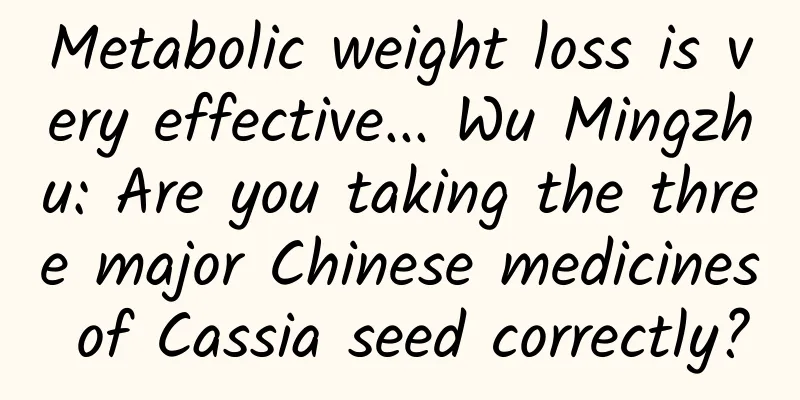
|
There are numerous weight loss gimmicks on the market, including advertisements such as "You don't have to starve to lose weight, one tablet can eliminate fat" and "Be careful with diet pills, don't worry about side effects." If you don't want to take the risk, you can use the right Chinese herbs to promote metabolism and assist in weight loss. Chinese medicine practitioners said that using the three most commonly used Chinese medicinal materials, including Cassia seed, according to the dialectical use of physical constitution can help you lose weight healthily. They also recommended four commonly used prescriptions and two types of teas for a better weight loss effect. Study: Chinese herbal medicine tripterygium wilfordii has weight loss effect Which Chinese herbal medicines can help you lose weight? Media reported recently that German scientists have discovered a Chinese herbal ingredient, tripterygium wilfordii, which shows good effects in weight loss. This new discovery has been published in the latest issue of the journal "Diabetes". Chinese medicine practitioner Wu Mingzhu said that Tripterygium wilfordii, also known as yellow vine, yellow vine grass, yellow vine root, yellow vine wood, yellow wax vine, mangcao, water mangcao, red purple root, red wood root, water brain root, red medicine, yellow medicine, vegetable worm medicine, and mountain arsenic, is a plant of the genus Tripterygium in the Celastraceae family and is highly poisonous. Tripterygium wilfordii has a long history of use in traditional Chinese medicine. The medicinal Tripterygium wilfordii is actually taken from the root of the Tripterygium wilfordii plant. It has the effects of dispelling wind and dampness, promoting blood circulation and dredging meridians, reducing swelling and relieving pain. It is mainly used to treat arthritis, leprosy, eczema, etc. Chinese medicine practitioner: Tripterygium wilfordii is toxic and can be dangerous if used carelessly The toxicity of Tripterygium wilfordii to different animals varies. It is highly toxic to humans, dogs, pigs and insects, causing poisoning or even death, but it is non-toxic to sheep, rabbits, cats, mice and fish. There are two effects of Tripterygium wilfordii on the body: one is the local stimulation to the gastrointestinal tract; the other is the damage to the central nervous system including the thalamus, midbrain, medulla oblongata, cerebellum and spinal cord after absorption, as well as causing bleeding and necrosis of the liver and heart. It is said that Tripterygium wilfordii mainly poisons the hearts of animals, but it is also toxic to other smooth muscles and striated muscles, which is the cause of death by poisoning. The "safe dose" of Tripterygium wilfordii is very narrow. In some cases, the therapeutic dose and toxic dose of Tripterygium wilfordii even overlap. Tripterygium wilfordii itself is a highly toxic drug, especially its bark, which is extremely toxic. Chinese medicine uses it by cleaning it after soaking it, then peeling off the bark, including the double bark and the bark in the cracks of the tree; completely removing the inner and outer layers of the bark of the dry root, slicing the wood, and drying it in the sun before using it as medicine. Tripterygium wilfordii itself is a highly toxic drug, especially when applied to the skin. Chinese medicine practitioners remind us that Tripterygium wilfordii is toxic and can be dangerous if not used with care. The most recent tripterygium wilfordii mouse study, published in the May 21 issue of the journal Cell, found that using a compound called celastrol, an extract from tripterygium wilfordii, reduced food intake in obese mice and caused them to lose 45 percent of their body weight. The theory is that it exerts its powerful weight loss effect by enhancing the appetite of a hormone called leptin and inhibiting the action of hormones. Leptin insensitivity is the root cause of obesity Leptin, a hormone secreted by fat cells, signals the brain when the body has adequate fuel and energy. Humans and mice lacking leptin signaling eat uncontrollably and become morbidly obese, suggesting that leptin-enhancing drugs may be effective in treating obesity. Despite high levels of this hormone in the blood, leptin cannot eliminate hunger or reduce food intake in obese individuals. Leptin insensitivity is the root cause of obesity. Leptin resistance is associated with a reflex response in the endoplasmic reticulum of cells; and celastrol can effectively produce responses associated with improving endoplasmic reticulum function and leptin sensitivity in human cells. ★【3 commonly used Chinese medicinal herbs that help metabolism and assist weight loss】: Dr. Wu Mingzhu said that basically, Chinese medicine does not recommend the use of triptolide for weight loss because it is dangerous. Chinese medicine will use the dialectical analysis of physical constitution to assist in weight loss. The following are three commonly used Chinese herbal medicines that help metabolism and assist in weight loss: 1. Cassia seed: can be used raw or fried, also known as Cassia tora. The effects are clearing the liver, improving eyesight, moistening the intestines and promoting bowel movements. It can be used to treat headaches, dizziness, red and swollen eyes, and constipation caused by heat. It has the effects of lowering blood pressure, lowering blood lipids, and inhibiting bacteria. Cassia seed has a mild laxative effect and can interfere with the absorption of fat and carbohydrates. It is a commonly used traditional Chinese medicine for weight loss and lipid reduction. The laxative effect of raw use is stronger than that of fried use. Suitable for obese patients with spleen dampness and phlegm obstruction syndrome. Cassia seed is a commonly used traditional Chinese medicine for weight loss and lipid reduction. 2. Lotus leaf: It has the effect of clearing away heat and dampness. Used for summer heat headache, dizziness, and spleen deficiency diarrhea. Lotus leaves have the effect of clearing away heat and dampness. People eat lotus leaf porridge in summer to get rid of the heat. It is often used to treat obesity, especially suitable for weight loss in summer, or for obese patients with spleen deficiency, dampness obstruction and heat syndrome and stomach heat and dampness obstruction syndrome. 3. Alisma orientalis: peel and slice for medicinal use. The effects are promoting urination and clearing away dampness and heat. It is used for difficulty in urination, edema, diarrhea, oliguria, dizziness caused by phlegm and fluid, and painful stranguria caused by heat. It has the effects of lowering blood lipids, anti-atherosclerosis, and anti-fatty liver; animal experiments have found that Alisma can reduce the fat index around the uterus and testicles of obese rats, inhibit the ability of mice to lipidate cholesterol in the small intestine, and reduce the cholesterol absorption rate in the small intestine of rats. Alisma orientalis has the effect of clearing heat and promoting diuresis. It is a commonly used Chinese medicine for weight loss and lowering blood lipids. It is suitable for gastric heat and dampness obstruction in obese patients. It can be used alone or added to a Chinese medicine compound. It should be noted that Alisma is sweet and cold in nature, so it should be used with caution for those with weak constitution or those with no obvious fever symptoms, or used in combination with other Chinese medicines to reduce its cold nature. ★【Four commonly used prescriptions for regulating the spleen and stomach】: TCM assists in weight loss by treating symptoms based on physical constitution. For example, there are four commonly used prescriptions for regulating the spleen and stomach, and two recommended teas, including: ● "Three Flowers Slimming Tea": (chrysanthemum, jasmine, kapok, chuanxiong, lotus leaf). ● "Lotus and Atractylodes Soup": (lotus leaves, atractylodes, white atractylodes, lentils, Achyranthes bidentata, coix seeds, astragalus, cinnamon twig, papaya, Poria, Alisma orientalis, hawthorn, plantain, knotweed, selfheal, licorice). ●"Xiaofei Drink": (lotus leaf, hawthorn, oriental water plantain). ●"Ginseng Lipid-Lowering Mixture": (raw sun-dried ginseng, pseudoginseng, American ginseng). ★【2 kinds of teas to moisten the intestines and promote metabolism】: "Intestinal moistening and dehumidifying tea": Ingredients: 5 qian of raw cassia seed, 5 qian of processed Polygonum multiflorum, 3 qian of hawthorn, 5 qian of Poria cocos, 3 qian of Salvia miltiorrhiza, and 3 qian of wolfberry. practice: Decoction or soak in boiling water for 15 minutes, take 1500 ml of juice and drink instead of tea. Function: It has the effects of strengthening the spleen and eliminating dampness, removing phlegm and eliminating dampness. It is suitable for obese patients with spleen dampness and phlegm obstruction syndrome. "Intestine-Moistening and Damp-Removing Tea" has the effects of strengthening the spleen and eliminating dampness, removing phlegm and removing dampness, and is suitable for obese patients with spleen dampness and phlegm obstruction syndrome. Astragalus and Cassia Tea: Ingredients: 3 qian of Astragalus, 4 qian of Cassia Seed, 5 qian of Dendrobium, 1 qian of Saposhnikovia divaricata, 1000cc of water, and appropriate amount of honey. practice: 1. Rinse the Chinese medicinal materials, put them into bags and tie them tightly into tea bags. 2. Put the tea bag in a cup, pour in 1000cc of hot water, let it sit for 3 to 5 minutes to allow the flavor to develop and then drink it. You can brew it continuously. Efficacy: It can help intestinal peristalsis, promote metabolism, replenish qi and enhance immunity, and gradually reduce appetite. Contraindications: People with diarrhea should not drink it. |
Recommend
What causes third degree cervical erosion?
The third degree of cervical erosion actually ref...
Can dysmenorrhea heal itself after marriage? Women with dysmenorrhea can eat more durian to relieve pain
Dysmenorrhea refers to the feeling of lower abdom...
Diagnosis of ovarian cysts
Ovarian cyst is a tumorous gynecological disease,...
How to effectively prevent dysmenorrhea
Dysmenorrhea is a common disease among women. The...
What causes cervicitis? How to effectively treat cervicitis?
The incidence of cervicitis among gynecological d...
How to treat multiple uterine fibroids?
Multiple uterine fibroids are a common gynecologi...
How to prevent spontaneous abortion
Spontaneous abortion is a common gynecological pr...
What are the precautions after pregnancy with uterine fibroids
What are the precautions after pregnancy with ute...
How to prevent ovarian cysts
How to prevent ovarian cysts? Ovarian cysts are a...
What are the symptoms and causes of cervical erosion? Detailed explanation of the causes and manifestations of cervical erosion
Cervical erosion is a gynecological disease that ...
What are the causes of female cervicitis? Gynecological experts point out the three major causes of cervicitis
Cervicitis is a common gynecological inflammation...
Honey water reduces belly fat, 5 tips to reshape waist
Whether it is a girl or a boy, belly is a flaw fo...
Medication for cervical precancerous lesions CIN2
It is well known that surgery is the most commonl...
The uterus is an important reproductive organ of women.
The normal uterus is located in the center of the...
Is Air Force breakfast bad? Nutritionist: The blacklist of obesity landmines is…
According to media reports, a volunteer air force...
